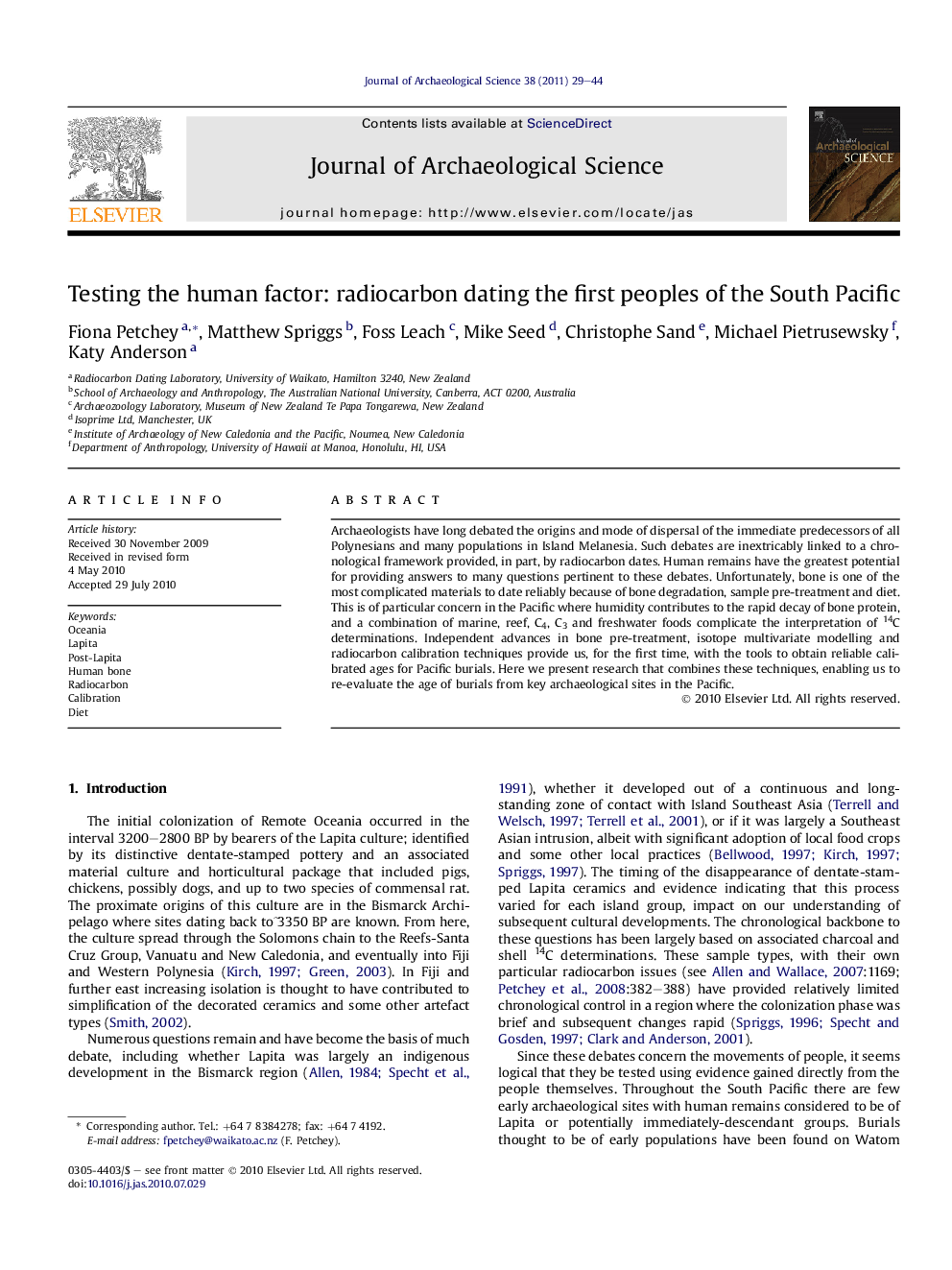| Article ID | Journal | Published Year | Pages | File Type |
|---|---|---|---|---|
| 1036282 | Journal of Archaeological Science | 2011 | 16 Pages |
Archaeologists have long debated the origins and mode of dispersal of the immediate predecessors of all Polynesians and many populations in Island Melanesia. Such debates are inextricably linked to a chronological framework provided, in part, by radiocarbon dates. Human remains have the greatest potential for providing answers to many questions pertinent to these debates. Unfortunately, bone is one of the most complicated materials to date reliably because of bone degradation, sample pre-treatment and diet. This is of particular concern in the Pacific where humidity contributes to the rapid decay of bone protein, and a combination of marine, reef, C4, C3 and freshwater foods complicate the interpretation of 14C determinations. Independent advances in bone pre-treatment, isotope multivariate modelling and radiocarbon calibration techniques provide us, for the first time, with the tools to obtain reliable calibrated ages for Pacific burials. Here we present research that combines these techniques, enabling us to re-evaluate the age of burials from key archaeological sites in the Pacific.
